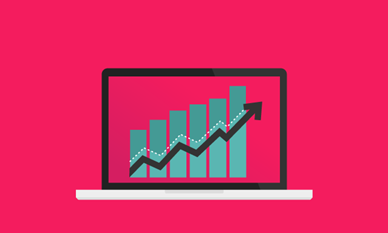Catalysing Behaviour Change #1
Why making healthy decisions is not easy
People are generally over-confident when it comes to their health, making meaningful lifestyle change is an uphill struggle. The answer to this lies in behavioural economics.
Studies suggest that 40% of human behaviour is habitual1 and two thirds of us abandon New Year’s resolutions within a month2.
Breaking habits is hard because it involves doing the opposite of what we are used to doing. Even with the best of intentions, newly adopted healthy behaviours are most often abandoned not long after.
We know that physical activity is good for us, but just under 40% of the UK population report doing less than the healthy guideline of 150 minutes per week3.
“Behavioural economics can be used in a range of innovative ways to encourage individuals to be healthier.”
Why is it so hard to make healthy decisions?
Human beings often have a disconnect between our current and future selves. According to neuroscientists, when we’re asked about something happening to us in the future, our brain activity appears as if we’re thinking about another person.
If decisions only benefit us further down the line, making a choice that’s within our best interests can be very difficult.
How behavioural economics can help
Sometimes all it takes is a nudge in the right direction. Behavioural economics is the scientific study of how and why people do what they do.
According to health policy expert David Asch: “The key contribution of behavioural economists is recognising that we are irrational in highly predictable ways!”
By harnessing this, human beings can be encouraged and helped to live in healthy lives in a way that benefits everyone.There are four laws of behavioural economics at play within the Vitality Programme.
1. OPTIMISM BIAS
People are generally over-confident when it comes to their own health and wellbeing. That’s why we show people their Vitality Age. Once they are made aware of this gap, they are more motivated to close it.2. LOSS AVERSION
Studies show we are more likely to change our behaviour where losing something is at stake. Our data helps prove it. Vitality members who opted in to buy a smartwatch with no upfront cost, with future repayments linked to their physical activity, were 34% more active than other members on average.3. STATUS QUO BIAS
As humans, we generally prefer things to stay the same. This is why retaining their Vitality status becomes such an effective motivator for members.4. HYPERBOLIC DISCOUNTING
Also known as ‘present bias’, we have a tendency to choose instant gratification over even bigger and better rewards later down the line. That’s why short-term incentives such as Caffè Nero coffees and cinema tickets work so well.
lifestyle choices, alongside market-leading health and protection cover:
Where to next?
-
Everything is digital these days why not healthcare too?
Whilst the provision of healthcare is clearly far more serious, there’s increasingly no reason why digitisation shouldn’t be embraced within PMI, writes Greg Levine, Vitality’s Chief Operations and Growth Officer.
-
Five super-convenient healthcare services your clients can use at home
Whether it’s checking a lump or speaking to a GP, getting access to care when we need it most is fundamental to our health. There are now an increasing range of digital treatments available to your clients at their fingertips, writes Vitality Magazine’s Olivia Matsell.
-
Insights Hub
Our Insights Hub brings you our range of adviser content - from video series to articles blogs.
1 How we form habits, change existing ones, Society for Personality and Social Psychology, August 2014
2 Self-Regulatory Goal Motivation Processes in Sustained New Year Resolution Pursuit and Mental Wellbeing, MDPI, March 2021
3 Physical Activity: applying All Our Health, March 2022
4 RAND, Apple Watch Study 2018


